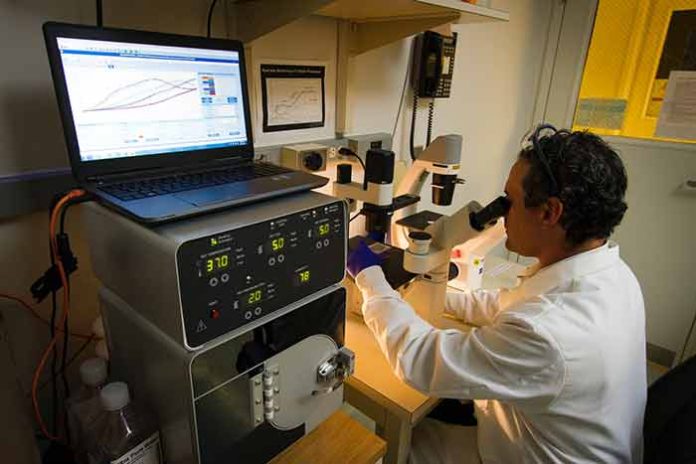All the electronic devices in your life, laptops, phones, etc., undergo strenuous testing to ensure they’re working correctly. Even massive electronic machines across various industries use electronic testing to ensure everything goes off without a hitch.
How do testers perform these strenuous tests to ensure everything is working correctly? They use their test system, which consists of various test and measure equipment. Each automated test and measurement systems tool will create and read different signals indicating how well the test subject performs.
Based on the results, you’ll be able to see how well it’s working or where improvements are needed. Many of these tools were analog only throughout the years, but now you can find digital options. As you build your test system, you must know the basic types of automated test and measurement systems.
Equipment to Measure Basic Testing Parameters
The first grouping of basic test equipment involves tools that test for the basic parameters. These include the current, conductance, voltage, capacitance, and resistance. You should test for these in the beginning stages of production and for regular maintenance.
Voltmeter
A voltmeter is one of a test system’s most basic yet needed testing tools. These devices will measure the voltage between different points in an electric circuit. As you browse for a voltmeter to include in your test system, you’ll find that there are two main kinds, an analog and digital voltmeter.
Some voltmeters come with a battery pack to power the device, while others will turn on when you connect to use them, using the voltage from the circuit to power them.
Analog voltmeters feature a scale with a pointer that will move throughout the scale to give you the voltage of an electronic device. For those who are used to reading analog-style, these aren’t difficult to use, but digital voltmeters are the preferred choice for a test system.
Digital voltmeters will calculate the voltage of an electric circuit and then display a numerical value on the screen. These are great because there’s no room for error when it comes to reading what the resulting voltage is. People choose digital voltmeters because they’re more accurate than analog ones.
You cannot go without a voltmeter in your test system unless you’re interested in getting a multimeter that can test for voltage and other parameters.
Ohmmeter
You’ll need an ohmmeter to measure electrical resistance, which isn’t the testing tool that will measure the electric current; that’s an ammeter we’ll discuss next. An ohmmeter sends an electric current into the circuit or device that you need to measure the resistance.
While testing, the ohmmeter will measure the voltage and determine the resistance using Ohm’s Law. Ohm’s Law is a law of physics that states an electric current is proportional to the voltage while inversely proportional to the resistance.
Something to remember when using an ohmmeter is that you should never connect it to a circuit or device that currently is carrying a current, meaning that if it’s connected to any power source, don’t connect the ohmmeter. Plugging it into something with a current power source can cause you to damage the ohmmeter.
There are two types of ohmmeters, a micro-ohmmeter and a macro-ohmmeter. A micro-ohmmeter is a test tool that will measure low resistance, while a macro-ohmmeter can calculate larger resistance values.
Ammeter
An ammeter, also known as an ampere meter, is a measuring device. When measuring electric currents, the unit of measure is an ampere (A), where this test tool gets its name. When you use an ammeter, you’ll plug it into the electrical circuit and the device you’re trying to test.
Depending on the ammeter you’re using, you shouldn’t see a significant voltage drop when using this device. Ammeters tend to have low resistance, which helps prevent this issue. Using an ammeter will help you measure whether the electronic device is using more energy than it should or is not using enough.
There are two types of ammeters to choose from. You can select an AC ammeter or a DC ammeter depending on the current you’re testing. Making sure you get the right ammeter will ensure accurate results when using it in your test system.
Multimeters
You don’t need to get an ohmmeter, voltmeter, and ammeter if you prefer to have a tool that can perform all three functions. A multimeter is a piece of equipment that can fulfill all three functions but with one device.
A digital version is the most user-friendly option when shopping for a multimeter. This versatile testing device is excellent for you to have in your test system, but you don’t need it if you already have the three listed above. It helps test for continuity between different points in the electronic circuit.
If you need your multimeter to function like an ohmmeter, switch it to opposition mode. Doing this allows it to measure the resistance in an electrical circuit.
Equipment to Measure Stimulus Signals
In addition to tools that test for basic parameters, you’ll need equipment that can measure the stimulus signals coming from the electronics. Three pieces of equipment can do this: power supplies, signal generators, and pulse generators.
1. Power Supplies
As the name might suggest, power supplies will provide power to the electronics. These devices usually supply a direct current (DC) to the electronics. A direct current will allow you to see how well the overall health of whatever electronic device is.
You can get single or multi-channel power supplies depending on your needs. A single-channel power supply has only one output, while a multi-channel has at least two, maybe more outputs. Both are great for measuring the power output, but whether you need a single or multi-channel one depends on your needs.
2. Signal Generators
There are several signal generators on the market, but these are important to a test system because testers can use them to create electrical signals. You can use signal generators throughout the manufacturing process and test an electrical circuit.
You can use a signal generator to test the signal, improve the design, and troubleshoot any issues that you might be experiencing with an electronic. Signal generators come in various options, some more basic than others.
The most straightforward signal generator can calibrate amplitude and frequency, which is excellent for most test systems. Other general signal generators allow you to control or manipulate different aspects of the electric signal from the device.
Examples of signal generators include function, pitch, RF, microwave signal generators, a digital pattern, and frequency generators. Which one you’ll need will depend on the electrical circuit you’re testing, as they all don’t work for every device.
3. Pulse Generators
Pulse generators can be one of two things. They can either be a piece of electronic testing equipment or an electronic circuit. When creating your test system, you’ll want to ensure you’re getting the correct type of pulse generator for your needs. Pulse generators are usually used for digital circuits and not analog ones.
When creating stimulus signals to test, pulse generators are another popular test tool in a test system. These devices provide pulses in various electronics to see how well the device functions.
A pulse generator produces the pulse width, pulse trigger, rectangular wave generation, pulse delay, pulse amplitude, pulse rise and fall, and if there are any repetitive areas. Seeing any variation in these measurements can help you assess the status of the electronic device.
These test tools come with a battery, can, antenna, circuitry, connectors, and a reed switch. You’ll be able to plug the pulse generator into the electronic circuit you want to test and then measure the signals.
Equipment to Measure Response to Stimulus Signals
Last but not least, you need a piece of equipment that can measure the electronic’s response to the stimulus signals. Measuring responses to stimuli is a critical element of building a test system you won’t want to leave out.
Oscilloscope
An oscilloscope is the best tool to measure the electronic response to input signals. An oscilloscope is a must-have in a test system, regardless of if it’s your first system or 100th. Oscilloscopes will measure any changes in the electric signal throughout time.
The oscilloscope will show any changes the test tool detects on a graph that the device produces. It takes these measurements and creates a 2-D waveform you can study or a graph. The chart will show the frequency or the signal, amplitude, intervals, rise time, and more.
Final Thoughts
With technology constantly changing and improving, having a quality test system is critical to detect any issues with the product. When building a test system, ensuring you cover all your bases regarding the basic automated test and measurement systems is a must.
You’ll need equipment to measure basic testing parameters, stimulus signals, and the electronic’s response to the stimulus signals. Once you cover all your bases with these tools, you’ll be able to adequately test an electronic to ensure it’s working as best as possible.





